Content
- Indications for setting an intravenous dropper, goals
- Puncture sites
- Patient preparation
- Preparation of equipment and work space
- Optimal injection rate
- Dropper catheters
- Algorithm for setting an intravenous dropper in accordance with GOST
- Preparing for the procedure
- Drug set
- Procedure execution
- End of procedure
- Possible complications and first aid
- Video about setting a dropper
Intravenous drip setting - This is one of the methods of infusion therapy with drugs that are available in the form of an injection solution. The use of this method of treatment makes it possible to accelerate the delivery of active substances of the medicament into the patient's body.
Intravenous droppers are used as part of complex therapy or as an independent drug. The algorithm for setting up the infusion system is carried out in accordance with the regulatory requirements of SanPin 2.1.3.2630-10.
Indications for setting an intravenous dropper, goals
The algorithm for setting an intravenous dropper is mandatory for medical workers of all categories.
This type of infusion therapy is indicated for use in the following clinical cases:
- myocardial infarction or exacerbation of cardiovascular disease:
- bronchial spasm;
- severe depletion of the body caused by prolonged fasting or chronic illness;
- an extensive allergic reaction (a medicinal solution of an intravenous dropper can speed up the process of removing allergens from the patient's blood);
- cerebral stroke;
- alcohol poisoning, overdose of drugs, food, biological poisons and chemicals;
- parasitic invasions (in this case, intravenous administration of drugs allows significantly increase the likelihood of complete cleansing of the body with minimal stress on the liver and organs of the digestive tract);
- imbalance in electrolytes;
- atherosclerosis of the blood vessels;
- dehydration of the body;
- complex therapy of oncological diseases;
- prolonged vomiting or diarrhea;
- burns of large areas of the body;
- profuse blood loss;
- neurological diseases;
- inflammatory and infectious processes in the body.
The algorithm for setting an intravenous dropper is fixed in the regulatory legal acts of a medical nature. Infusional administration of drugs is prescribed for patients who have undergone surgery or severe trauma. Medicines entering the general bloodstream accelerate the process of tissue regeneration, prevent inflammation and the development of bacterial infection.
Puncture sites
The setting of an intravenous dropper involves the injection of a medicinal solution.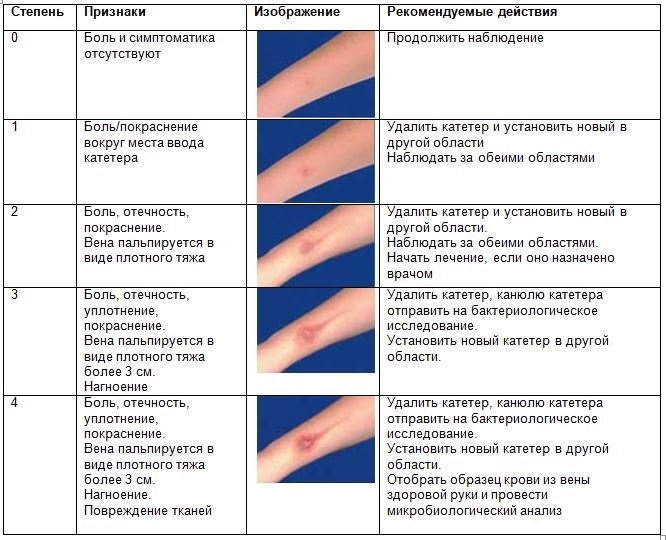
Depending on the condition of the patient's blood vessels, areas of the body can be used for puncture:
- the forearm, where the ulnar vein passes (this site of injection of drugs is used in most cases);
- the outer side of the hand, if it was not possible to perform a puncture in the forearm area;
- the upper part of the foot (this area of the lower limb is used extremely rarely).
In emergency situations, when the patient is unconscious, urgent medical attention is required, puncture with a needle of the infusion system can be performed into the jugular vein. Installing a dropper in this area of the body requires a high level of qualification from a medical professional.
Patient preparation
The algorithm for setting an intravenous dropper provides for the mandatory preparation of the patient.
In this case, you will need to do the following:
- Explain to the patient that the installation of an intravenous dropper will now be carried out.
- Explain to the patient the purpose of performing fluid therapy.
- Make sure that the patient is not prone to allergic reactions to drugs that will flow into his general bloodstream.
- Invite the patient to visit the toilet to empty the bladder. During the intravenous infusion, additional fluid will enter the body, which activates kidney function.
- Help the patient to take the most comfortable position, based on which vein the medication will be infused into.
At the final stage of the patient's preparation, it is necessary to inquire about his well-being, as well as his readiness to install an intravenous dropper. After that, you can proceed to the next stage of infusion therapy.
Preparation of equipment and work space
The table below provides a step-by-step flowchart for preparing the equipment and workspace for setting an intravenous drip.
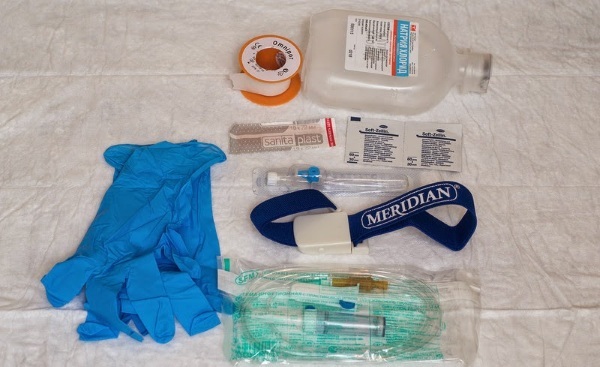
| Step-by-step procedure | Description of the workspace preparation process |
| Step 1. Checking the infusion system. | At this stage, you will need to check the tightness of the packaging in which the system is located, as well as its expiration date. |
| Step 2. Evaluation of the external characteristics of the medicinal solution. | The medical professional is required to read the name of the drug, the expiration date, check the presence or absence of sediment, the degree of transparency. |
| Step 3. Opening the package with the system. | The sterile IV bag must be unpacked and then positioned on the worktable. |
| Step 4. Setting up the tripod. | A tripod should be placed near the patient's bed, on which a bag or bottle with a medicinal solution will be fixed. |
| Step 5. Disinfection of the bottle cap. | The final stage in the preparation of the workspace and equipment is the antiseptic treatment of the bottle cap with the drug. To do this, use sterile cotton wool and ethyl alcohol. Then the bottle with the infusion solution is fixed on a tripod. |
After completing the preparation of the workspace and equipment, the healthcare professional can proceed to the next stage of staging. intravenous infusion, which provides for a set of drugs, as well as connecting the system to the general blood flow the patient.
Optimal injection rate
The optimal rate of infusion solution depends on which drug is used in a particular case. Each drug has its own pharmacological properties, and also requires compliance with different rates of its intravenous administration. This information is displayed by the manufacturer of the medication on the vial label or in the instructions for its use.
Dropper catheters
In the process of intravenous infusion of medicinal solutions, standard dropper systems and cubital catheters can be used. The latest medical device is used in hospitals of healthcare institutions. Cubital catheters are inserted into the vein cavity, and its upper part is fixed with a plaster on the surface of the arm.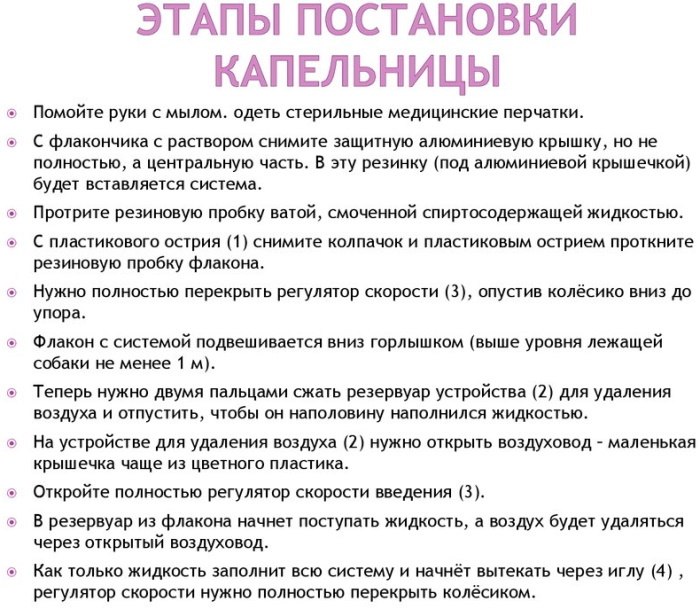
Such manipulations are performed if the patient needs frequent and prolonged administration of drugs by using intravenous droppers. The infusion set is connected to the cubital catheter connector. The advantage of using this therapeutic technique is minimal trauma to the patient's venous vessels.
Algorithm for setting an intravenous dropper in accordance with GOST
The algorithm for setting an intravenous dropper includes training a medical professional before performing therapeutic manipulations.
Preparing for the procedure
Preparation for the installation of an intravenous dropper provides for the following actions, enshrined in SanPin 2.1.3.2630-10:
- Put on a mask.
- Perform antiseptic treatment of the skin surface of the hands, and then wait for the disinfectant solution to dry completely.
- Wear disposable gloves, which must be sterile. The packaging with this type of consumable is opened immediately before starting the installation of the dropper.
The next step in setting up an intravenous infusion is a set of a drug with a sterile system connected to the patient's general blood flow.
Drug set
The set of the drug is an important stage in the setting of the intravenous drip.
In this case, the medical professional is required to perform the following actions:
- Open the package with a sterile syringe.
- Draw the required amount of the drug into the syringe, which is prescribed by the attending physician as the main or auxiliary means of infusion therapy.
- Introduce the medication into the infusion solution, which is in the vial. These actions are performed by puncturing a rubber stopper that has undergone a preliminary antiseptic treatment.
- Dispose of the disposable syringe.
The set of the medicinal product, as well as its mixing with the infusion solution, must be performed at the stage when the stand is already installed, and the bottle with the medication is fixed on it. When filling a syringe with an injectable drug, the healthcare professional must ensure that no air bubbles enter the therapeutic agent.
Procedure execution
The correct implementation of the therapeutic procedure for the installation of an intravenous drip will ensure that the patient receives the necessary dose of the drug, the time of its complete recovery will be shortened, and the risk of developing complications.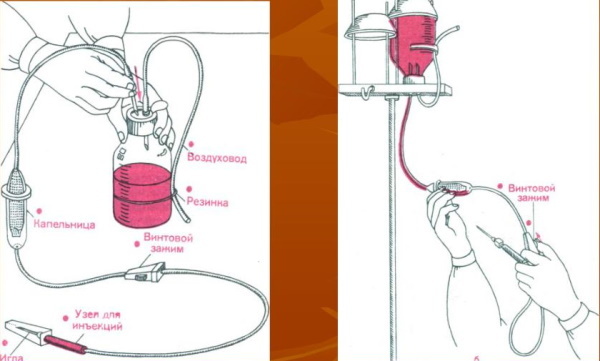
Setting up the infusion system requires compliance with the following algorithm of actions:
- Close the screw clamp of the IV line.
- The needle, which is connected to the infusion system, must be inserted all the way into the rubber stopper of a glass bottle with a buffer solution and drugs.
- Turn the medicine bottle upside down and check that it is securely fixed on the tripod.
- Using the physical strength of your fingers, squeeze the infusion tube to fill it halfway with the drug solution.
- Open the plug of the intravenous dropper.
- Open the previously closed screw terminal.
- Check that there is a gradual filling of the infusion system with medicinal solution with complete displacement of air bubbles.
- Make sure that drops of medication begin to flow from the needle, closed with a cap.
- Perform a control check of the intravenous dropper for the possible presence of air bubbles inside the bottle with the solution and the plastic tube.
- Close the clamp on the infusion set again. These actions are performed to eliminate the factor of air entering the dropper.
- Secure the infusion set to the rack.
- Put cotton wool and an alcohol-based antiseptic solution in a sterile tray.
- Cut a strip of adhesive tape 4 to 5 cm long and about 1 cm wide.
- Palpate the patient's vein to be punctured. These steps must be performed to ensure that the blood vessel is in good health.
- Apply a tourniquet to the surface of the middle third of the patient's shoulder, and then ask the patient to clench and unclench his fist several times.

- Treat sterile disposable gloves with a solution of ethyl alcohol.
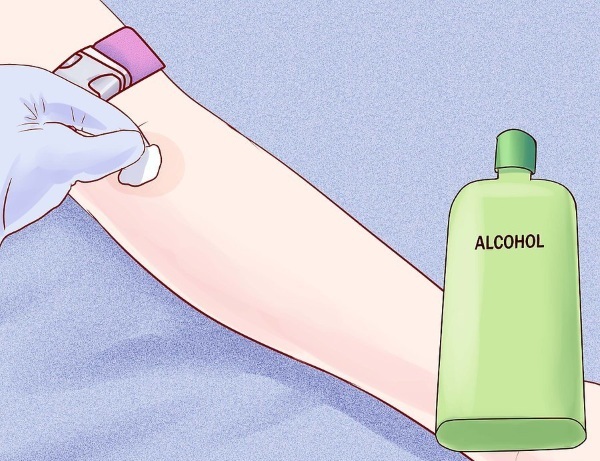
- Disinfect the skin of the hand in the area of the puncture. To do this, use antiseptic wipes or sterile cotton wool soaked in alcohol.
- Using the thumb, fix the venous vessel below the intravenous injection site.
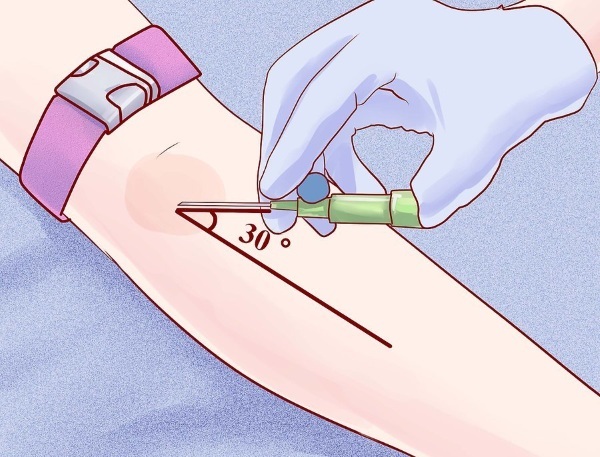
- With your right hand, insert the needle of the infusion system into the vein, holding its end with the slice up.
- Make sure that dark red blood appears in the cannula of the needle. A similar phenomenon indicates that the puncture was performed successfully, and the infusion system is connected to the patient's general blood flow.
- Fix the intravenous dropper needle to the surface of the patient's hand. For these purposes, a piece of adhesive plaster is used, which was prepared earlier.
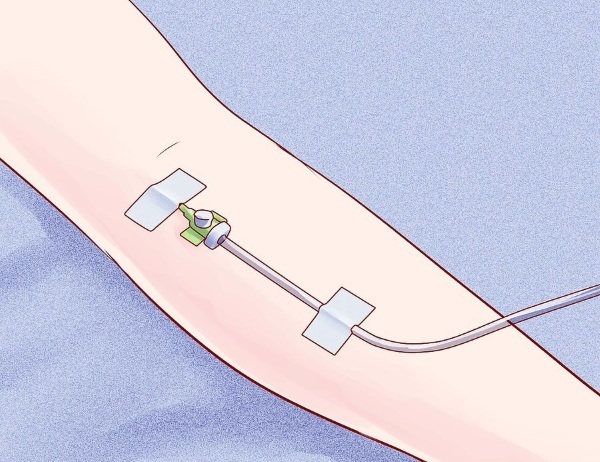
- Ask the patient to unclench the fist of the hand.
- Untie the fixed tourniquet to restore normal blood circulation in the vessels of the upper limb.
- Open the screw terminal.
- Use the wheel to adjust the infusion rate of the drug solution. In most cases, a rate of 40 to 60 drops per minute is selected. depending on the pharmacological properties of the drug.

- Start the process of introducing the medicinal solution into the general blood flow of the patient.
- Moisten a sterile antiseptic wipe with ethyl alcohol and then cover the needle of the infusion set. In this case, the risk of infection of the patient's blood is minimized.
- Remove disposable sterile gloves from your hands, and then place them in a plastic bag that does not allow moisture to pass through.
- Carry out the treatment of the skin surface of the hands with a solution of ethyl alcohol
- Wait until the disinfectant is completely dry.
Throughout the entire period of time of the infusion of the medicinal solution, the medical worker monitors the therapeutic process. An obligatory rule for setting an intravenous dropper is to monitor the general condition of the patient. Particular attention is paid to the symptoms of an allergic reaction to the injected medication.
In case of signs of urticaria, itching of the skin and mucous membranes of the eyes, bronchial spasm, it is necessary to immediately stop further intravenous infusion. After that, the patient receives symptomatic therapy aimed at stabilizing body functions.
End of procedure
The by-law SanPin 2.1.3.2630-10 states that upon completion of the procedure for setting intravenous dropper, a medical professional must perform the following steps:
- Treat the skin surface of the hands with an antiseptic solution based on ethyl alcohol.
- Wear disposable sterile gloves.
- Close the screw clamp on the infusion set.
- Apply sterile cotton wool to the injection site.
- Ask the patient to bend the arm at the elbow for 5-7 minutes to exclude venous bleeding.
- After 10 minutes. it is necessary to check that blood does not come out of the patient's vein.
- Dispose of consumables.
- Treat the surface of your hands with an alcohol antiseptic.
The final stage of therapeutic manipulations is filling out the nursing "Journal of procedures", in which the time of infusion therapy, the type of drug, as well as general well-being are indicated sick.
Possible complications and first aid
During the intravenous infusion, it is necessary to constantly monitor the patient's condition.
In this case, the occurrence of the following complications cannot be ruled out:
- the formation of an extensive hematoma in the area of drug administration;

- getting the infusion solution into the subcutaneous tissue, which causes burning pain;
- infection of venous blood with bacterial, viral or fungal microorganisms, if the standards of sterility were not observed by the medical worker;
- the development of gas embolism, which is caused by the ingress of air bubbles into the general bloodstream.
The last complication of infusion therapy entails a loss of consciousness with a further onset of death. Similar consequences are possible if, during the execution, the nurse did not make sure that there was no air inside the system.
The algorithm for setting an intravenous dropper is regulated by the by-law SanPin 2.1.3.2630-10. This document contains a set of rules and regulations governing the procedure for conducting infusion therapy. Before starting the intravenous infusion of the medicinal solution, the healthcare professional should perform antiseptic treatment of the hands, prepare the workspace and the patient.
The setting of an intravenous dropper is carried out under conditions of strict sterility. All manipulations are performed with disposable gloves. Throughout the entire period of administration of the drug, the nurse monitors the rate of infusion of the medication, is interested in the patient's well-being. After the end of the intravenous infusion, all consumables are discarded.
Video about setting a dropper
Intravenous infusion of drugs:



